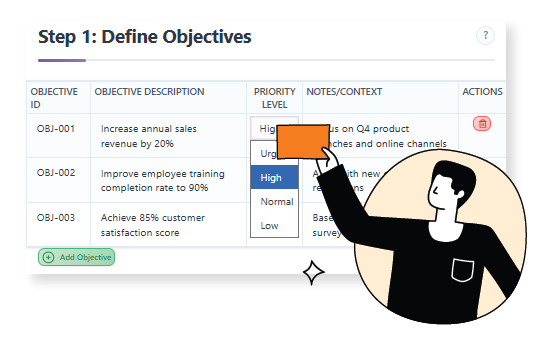Now Reading: IT Project Management: A Case Study
-
01
IT Project Management: A Case Study
IT Project Management: A Case Study
The Proactive Approach to IT Project Success
In the fast-paced world of IT and software development, projects are notoriously susceptible to challenges like scope creep, budget overruns, and a failure to meet user needs. While traditional project management methods are reactive, gap analysis provides a powerful, proactive framework to anticipate and mitigate these risks. By systematically comparing where a project is with where it needs to be, IT teams can identify and bridge critical gaps before they derail progress. This structured approach transforms project management from a reactive exercise into a strategic, forward-thinking discipline.
Step 1: Defining the Project Objective

The process begins with a clearly defined, measurable project objective.
This is more than just a vague goal; it’s a specific, time-bound target.
For example, instead of “build a new app,” the objective would be “launch a new customer-facing application with a 99.9% uptime by Q3 to increase customer engagement by 15%.”
This precision provides the “desired future state” against which all current progress will be measured.
It ensures every team member understands the ultimate goal and how their individual efforts contribute to it.
Step 2: Assessing the Current State
Once the objective is defined, the team must conduct an honest, data-driven assessment of the project’s current state. This involves evaluating key metrics and resources. Is the development velocity on track? Is the team facing technical debt? Do we have the necessary number of backend developers or a QA specialist? The team might note the progress of development, identify unforeseen technical roadblocks, or realize that the current development pace is too slow. This step is about gathering raw, objective data without judgment.
Step 3: Pinpointing the Gaps

With both the desired state and current state clearly defined, the “gap” becomes visible. This is where you identify the specific discrepancies. The gap might reveal that the current development pace is too slow to meet the Q3 deadline, or that a key feature for customer engagement is missing from the prototype. The gap isn’t just a symptom; it’s a direct indicator of what needs to be fixed. It could be a technical skills gap, a resource gap, or even a communication gap between the development team and stakeholders.
Step 4: Developing the Action Plan
After identifying the root causes, the team can create a targeted and actionable plan. This plan should be a series of concrete steps designed to bridge the gaps. For a technical skills gap, the action might be “enroll two junior developers in a course on cloud infrastructure.” If the gap is a lack of resources, the plan could be “hire a contractor to accelerate development” or “reallocate engineers from another project.” To close a communication gap, the team might “schedule a new series of stakeholder meetings to clarify user requirements.” The action plan transforms abstract problems into specific, assigned tasks.
Step 5: Continuous Monitoring and Adaptation
In the agile world of IT, gap analysis is not a one-time event. The action plan must be continuously monitored and adapted. The team should regularly track its progress against key performance indicators (KPIs) like sprint velocity, bug count, and feature completion. This allows for real-time adjustments. If a new technology proves more difficult to implement than expected, the team can pivot their strategy before the project falls behind schedule. By making gap analysis a continuous, iterative process, IT project managers can keep their initiatives aligned with business goals and deliver successful outcomes on time and on budget.

